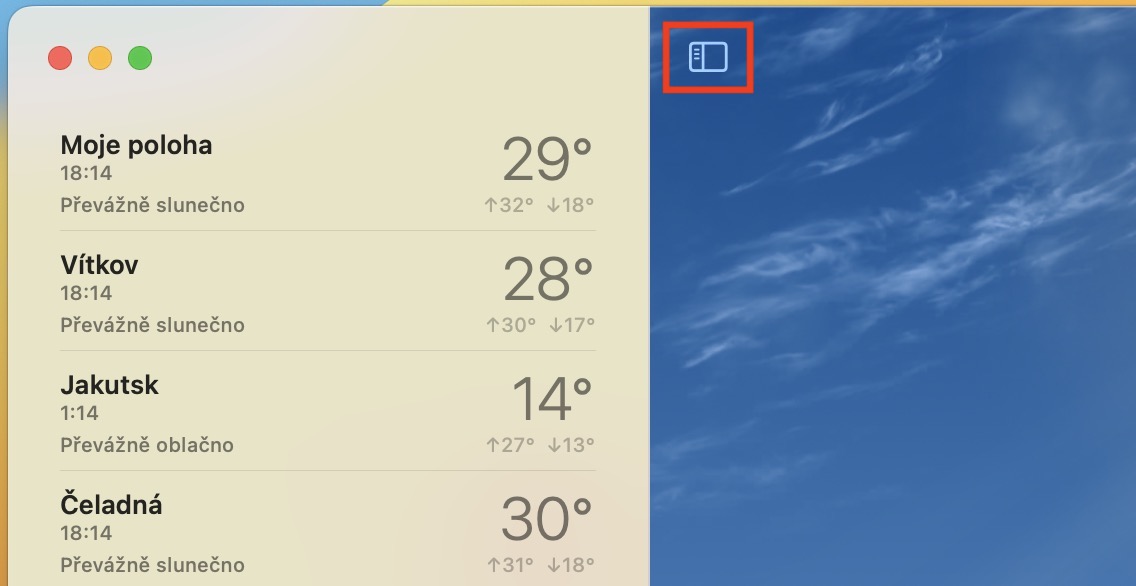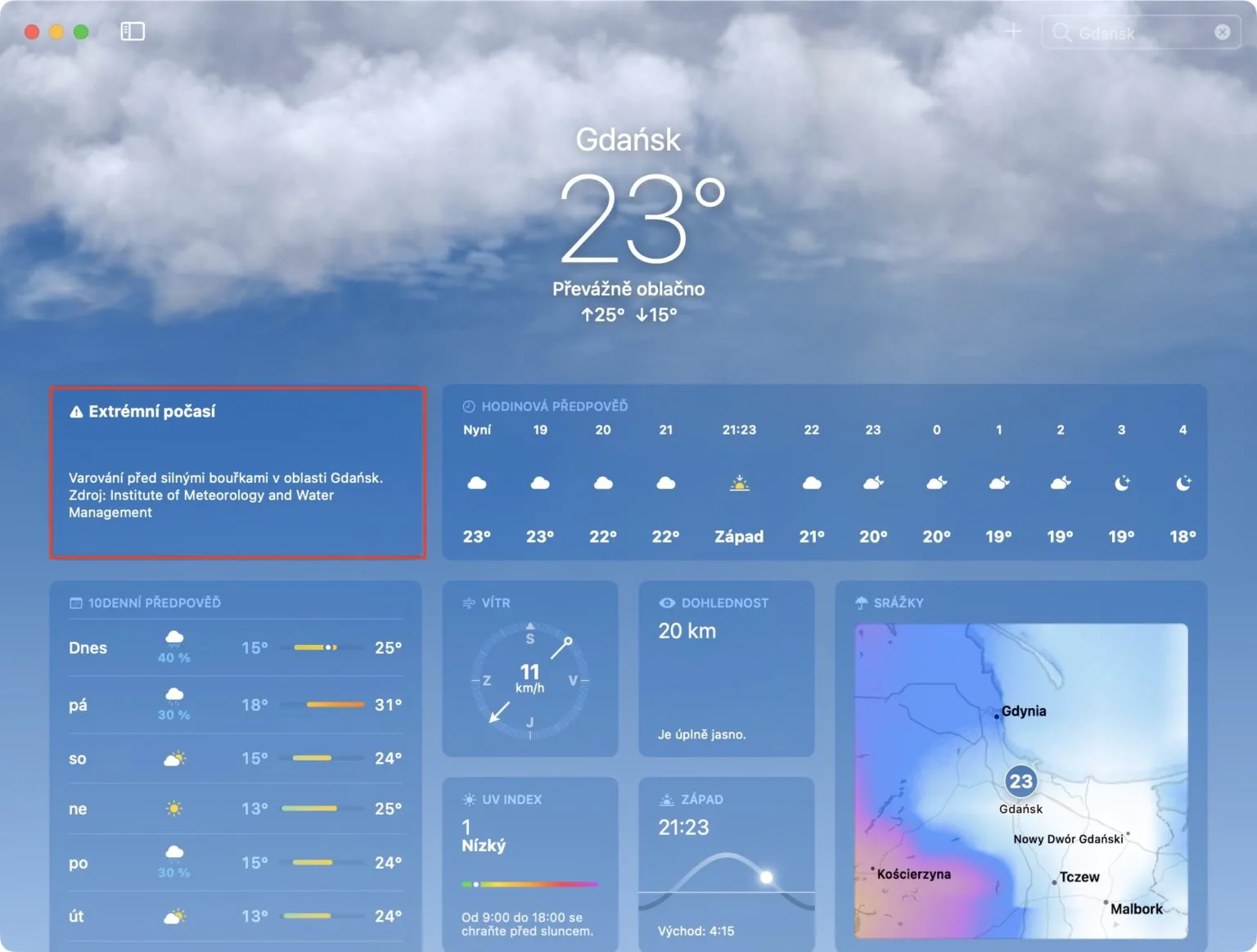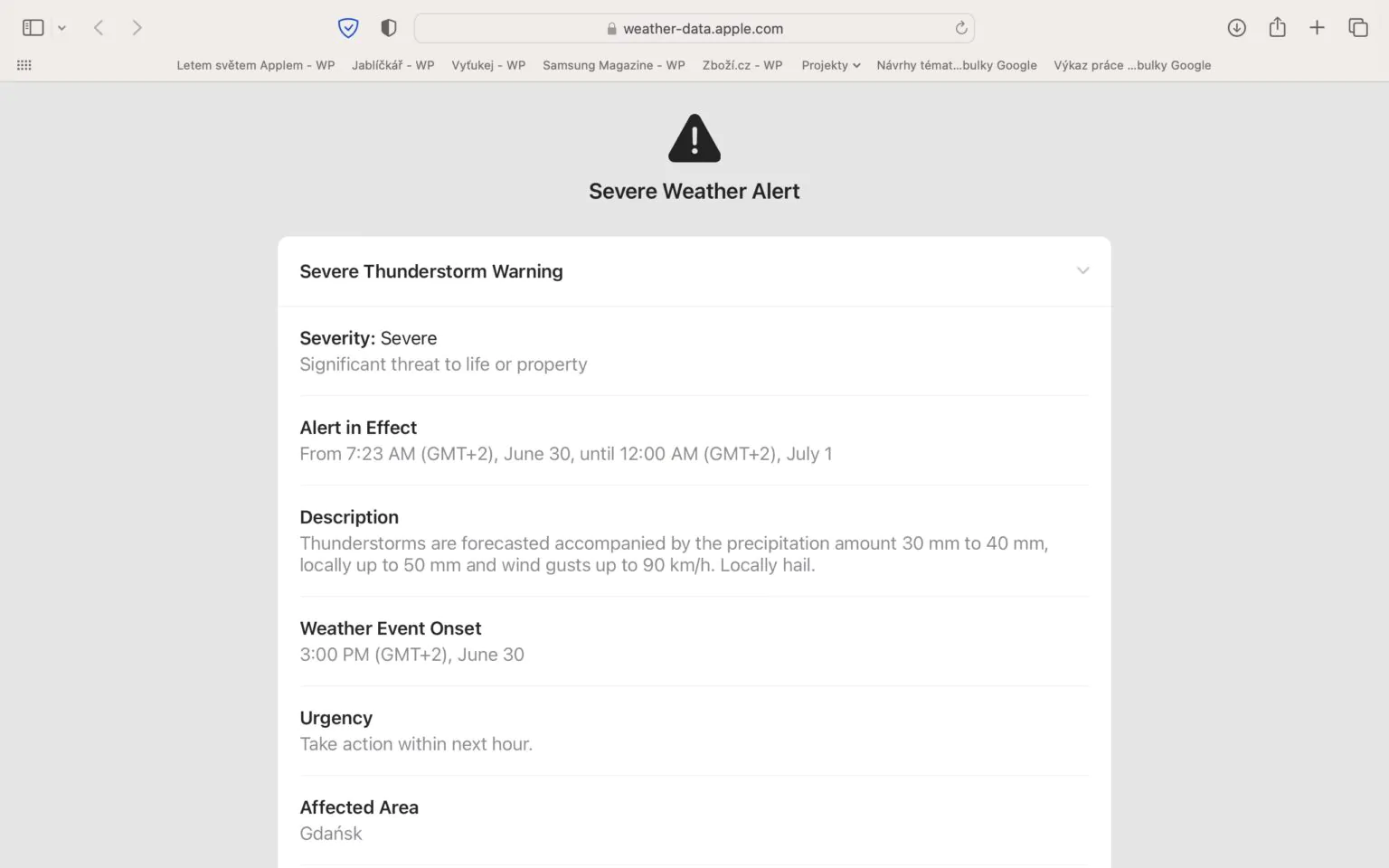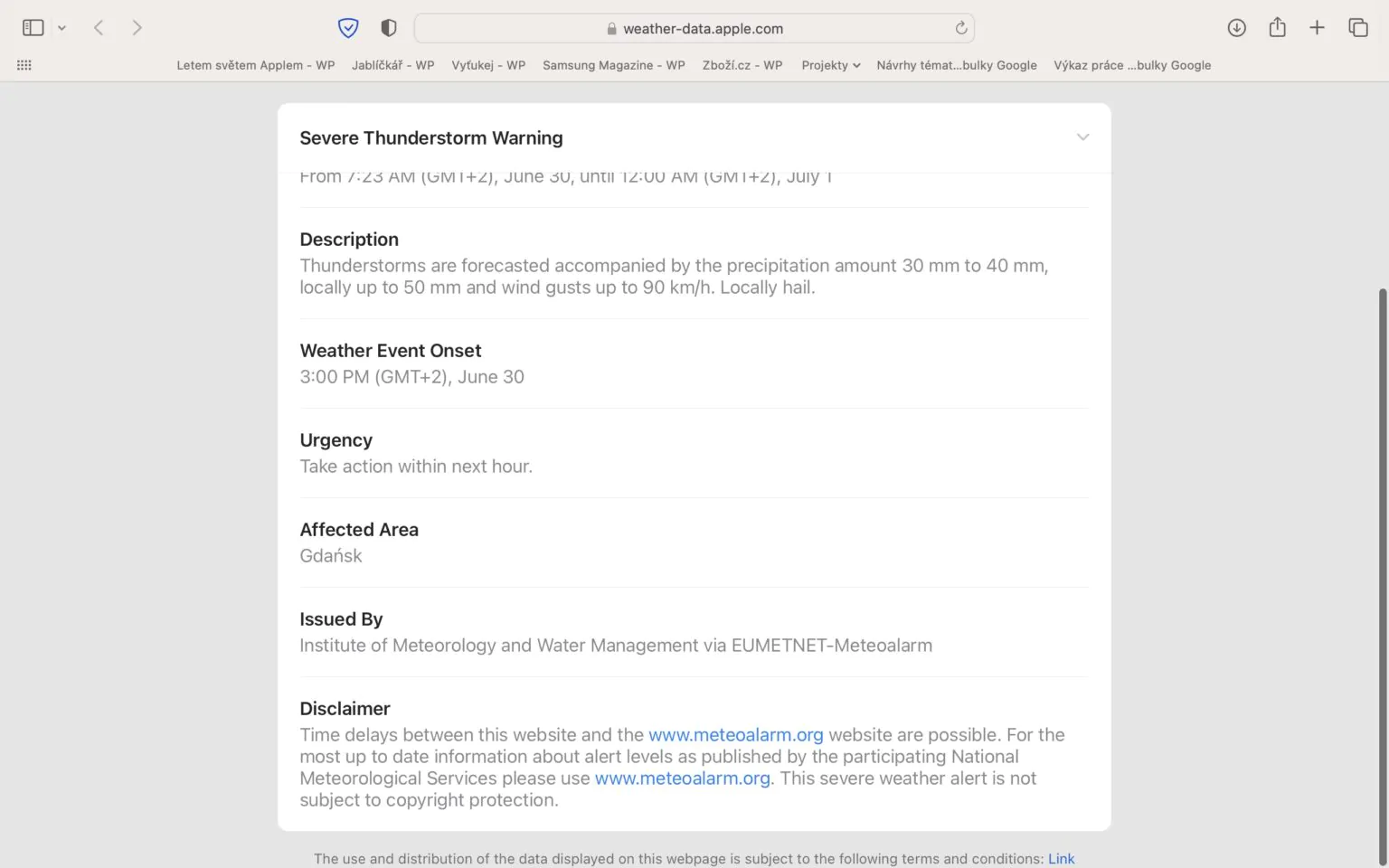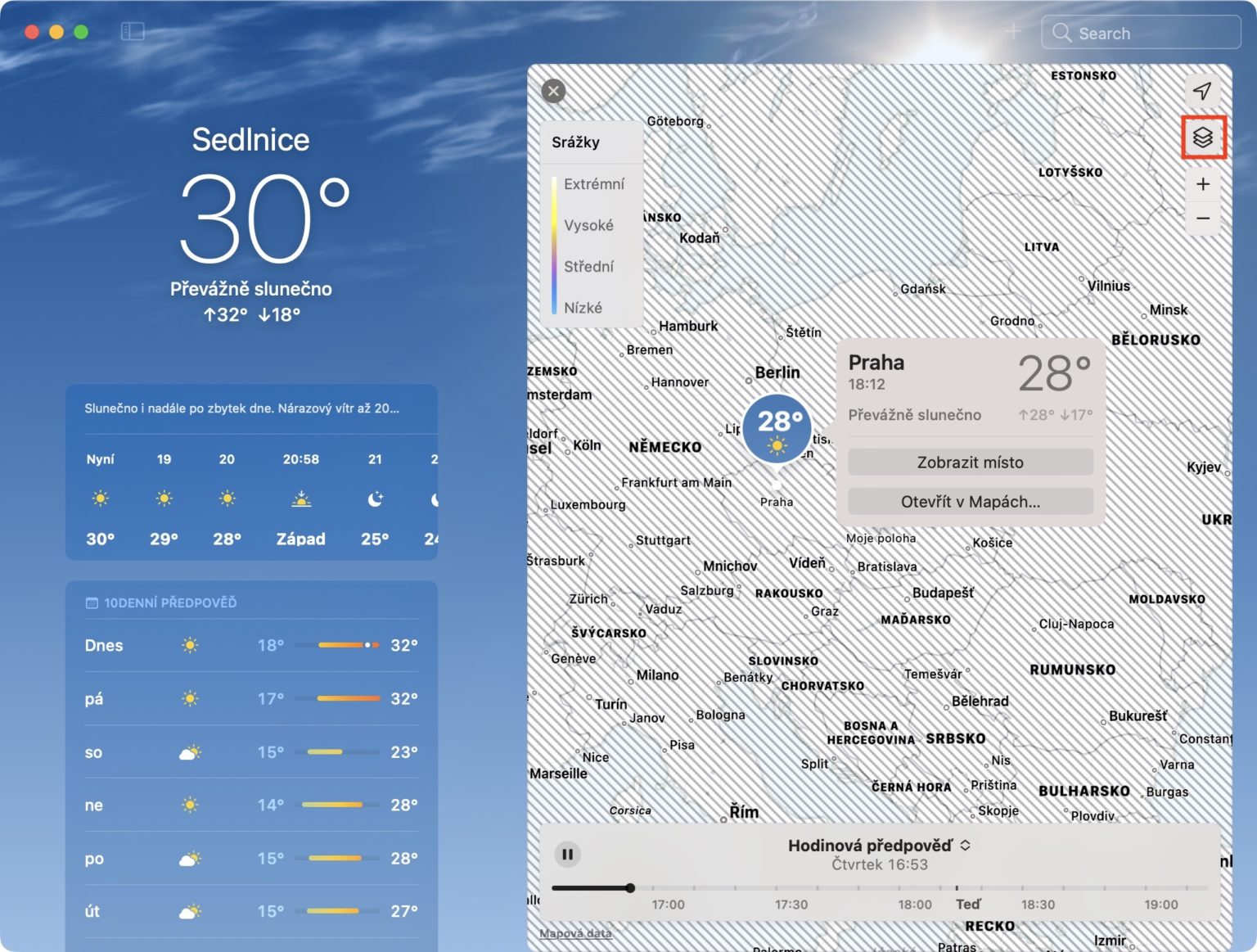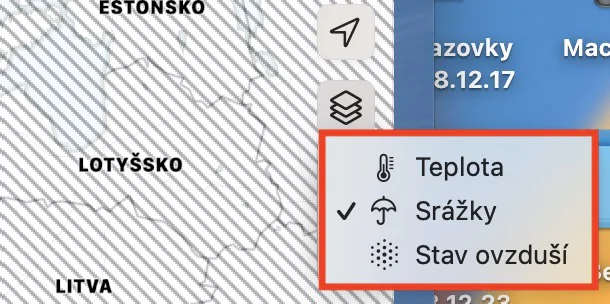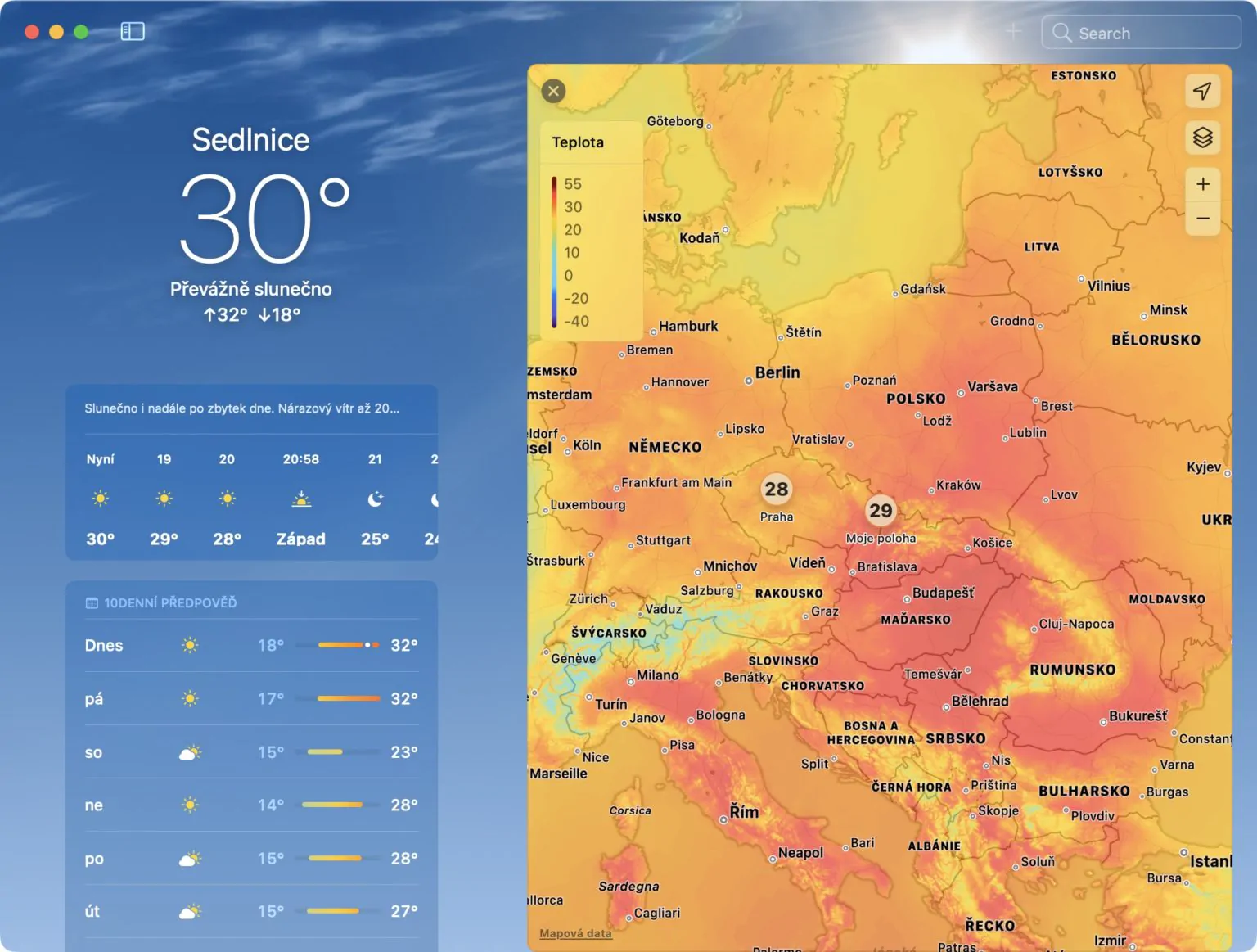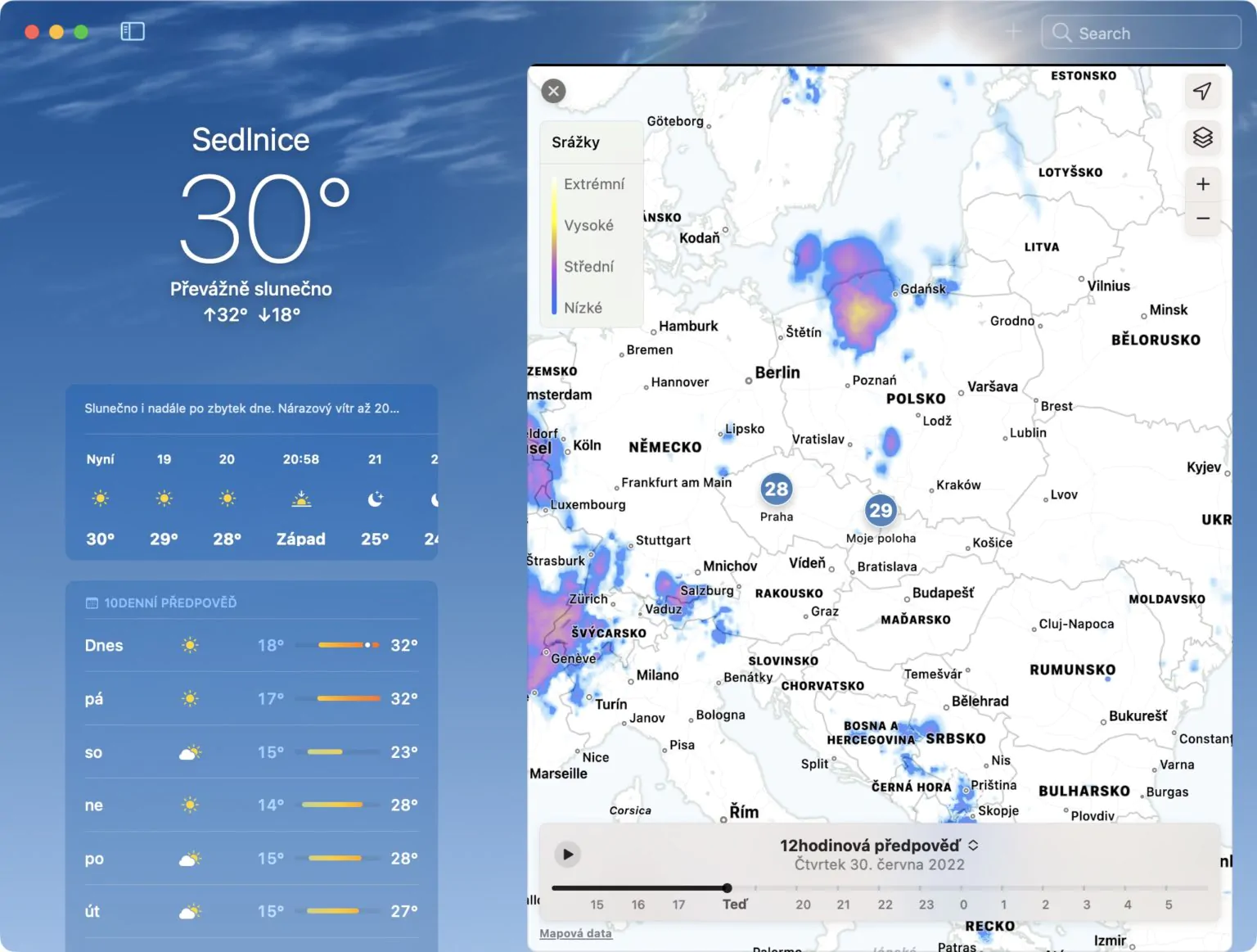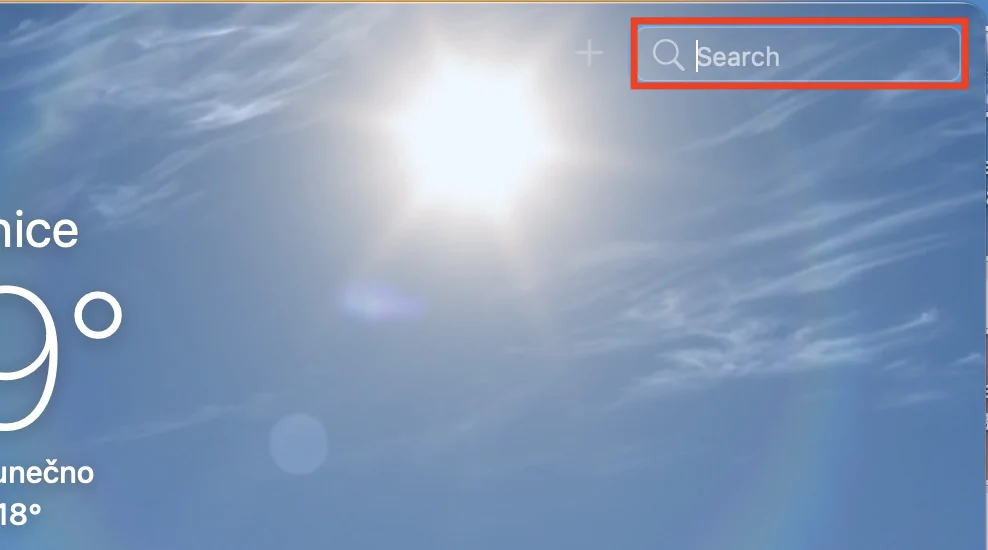If you were looking for a native Weather app in older versions of macOS, you wouldn't find it. The only mention you would find at most was within the sidebar where a weather widget could be placed, which many of us used. However, to obtain a complete application, it was necessary to reach for a third-party solution. So Apple really took its time with Weather, but we finally got it as part of the recently released macOS Ventura. And it's worth mentioning that the wait was really worth it, because the Weather app on Mac looks really cool. In this article, we will look together at 5 tips in Weather from macOS Ventura that you should know about.
It could be interest you
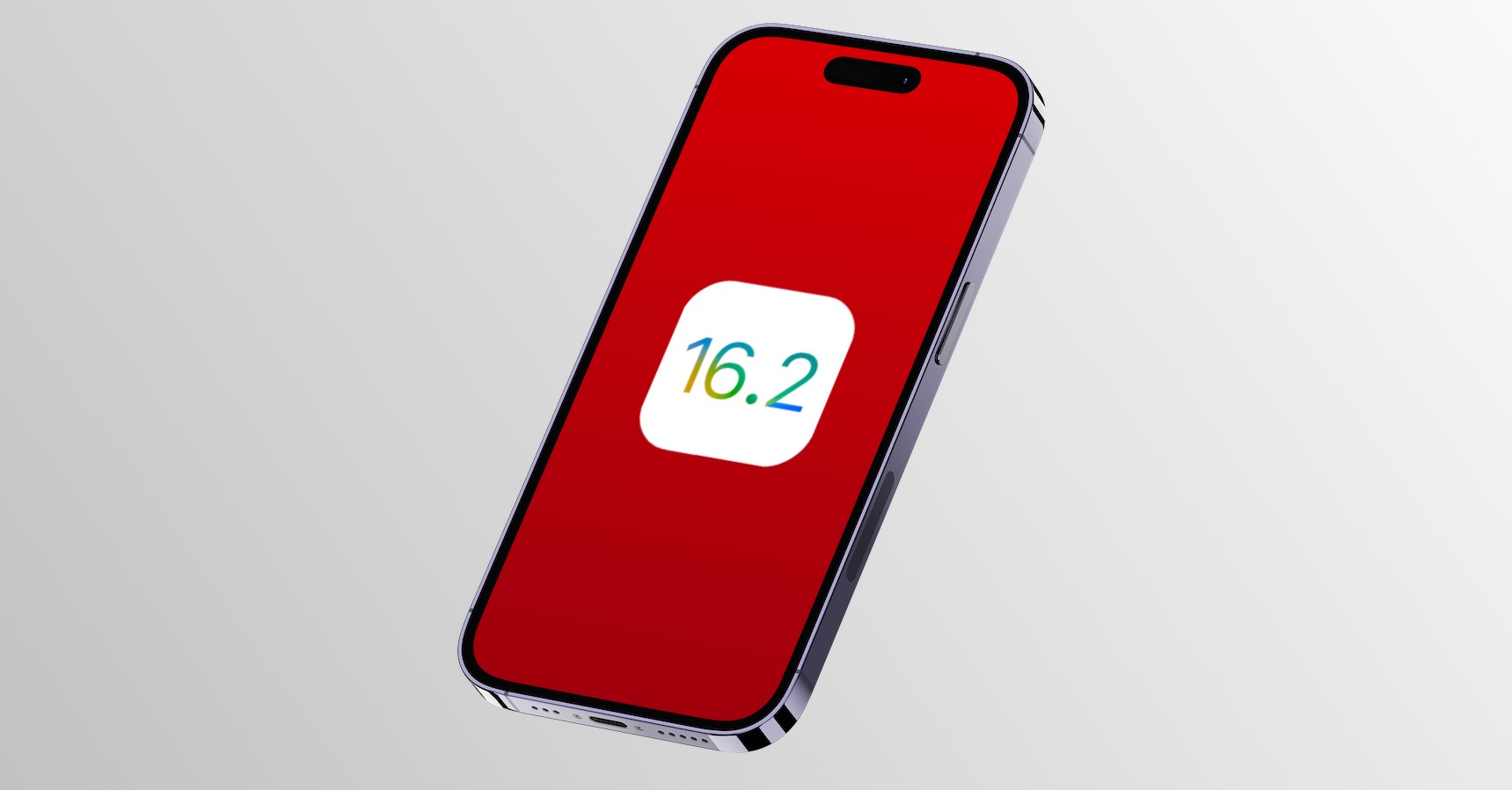
Weather warnings
If there is a threat of some form of extreme weather that we should be aware of, the CHMÚ will issue a so-called weather warning. This can inform the residents of the Czech Republic about high temperatures, fires, storms, floods, hail, ice, heavy snowfall, strong winds, etc. The great news is that you can easily view all these warnings directly in the native Weather application, so you can be up to date . If an alert is in effect for a specific location, it will be displayed at the top of the Extreme Weather tile. Clicking on the tile will then display all alerts if there are more than one declared.
Warning for extreme weather
As I mentioned on the previous page, your native Weather can inform about warnings and extreme weather on Mac. But if that's not enough for you, you can activate an extreme weather alert, where you will always receive a notification in the event of a warning, thanks to which you will have information practically at first hand. To activate this gadget, all you have to do is go to Weather, then tap on in the top bar Weather → Settings. Here it is enough to simply have activated an extreme weather warning, either at the current location or at one of the favorites. As for alerts with hourly rainfall forecasts, unfortunately they are not available here.
Rain radar
In the Weather application, you will of course find all the basic information about the weather in a specific place, i.e. temperature and more. However, there is also extended information in the form of the UV index, sunrise and sunset times, wind strength, precipitation intensity, perceived temperature, humidity, visibility, pressure, etc. But it does not end there, as a precipitation radar is now also available in Weather, which you can find always at a specific place a tile Precipitation. If you click on it, the interface itself opens, where it is possible to control the collision radar. You can also switch to the temperature map in this interface.
Adding a place to your favorites
So that you don't have to constantly search for specific places in Weather, you can of course add them to your favorites to have immediate access to them. It's not a terribly complicated method, however, if you turn on Weather for the first time, you might be a little confused by the controls. To add a place to your favorites, click on the top right in the search field, and then search for a specific location and click on it. Once all the information and data about it is displayed, just tap on to the left of the search field the + button, which leads to adding to favorites.
List of places
On the previous page, we talked about how to add a place to favorites, but how to display these favorite places now? Again, this is nothing complicated, but it may not be clear to some newer users. Specifically, you just need to in the upper left corner, tap on sidebar icon. Subsequently, already a list of all favorite places will be displayed. Click on same icon again then will happen again hiding so you can always switch and then hide the sidebar so it doesn't disturb you while viewing weather data.
